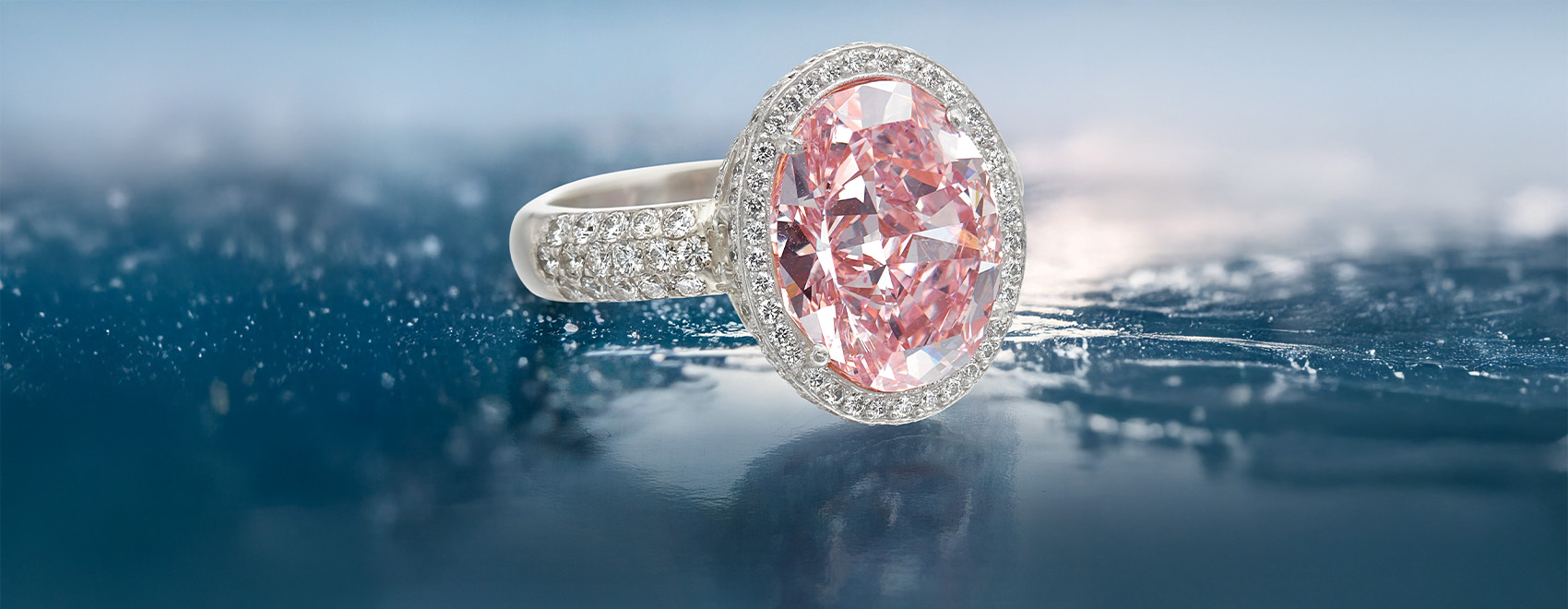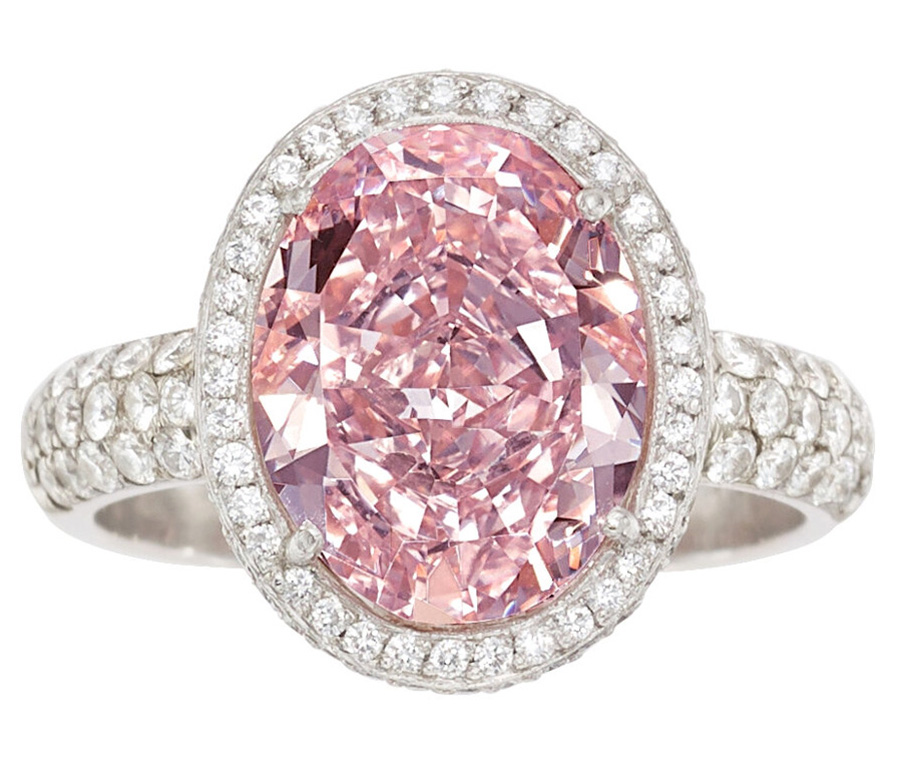ONE OF THE RAREST GEMSTONES ON EARTH, THE NEW-TO-MARKET DIAMOND LEADS HERITAGE’S HOLIDAY FINE JEWELRY AUCTION
By Rhonda Reinhart | November 4, 2025
In 2002, when Ben Affleck proposed to Jennifer Lopez for the first time, J.Lo’s 6.10-carat pink diamond engagement ring set a new standard in celebrity romance. Soon, high-profile brides including Mariah Carey, Victoria Beckham, Blake Lively, and, most recently, Lauren Sánchez Bezos would also don pink diamonds. But long before the A-list crowd gave the colored stone a starring role, collectors, gemologists, and connoisseurs alike knew well the pink diamond’s extraordinary beauty and rarity.
Each one a gemological marvel, pink diamonds are among the scarcest and most captivating gemstones on Earth. Statistically, the odds verge on the improbable that a diamond will form with both a significant carat weight and a notable fancy pink hue – a color designation determined by the Gemological Institute of America (GIA). Fewer than 0.01% of all diamonds mined annually display natural pink coloration, and those surpassing 5.00 carats with richly saturated tone reside at the absolute pinnacle of rarity, gems so scarce that few ever have the privilege to witness one.
This 6.17-carat fancy pink diamond ring is available in Heritage’s December 3 Holiday Fine Jewelry Signature® Auction. The oval-shaped center stone is surrounded by a total of approximately 1.00 carat of near-colorless diamonds.
One such example is the Angelina – the 6.17-carat fancy pink diamond available in Heritage’s December 3 Holiday Fine Jewelry Signature® Auction. The fresh-to-market oval-shaped treasure comes from the Estate of Willa Dean Lyon and takes its name from its owner’s granddaughter. A Texas native, Lyon was a respected member of her Orange County, California, community, where her husband, William Lyon, was a prominent homebuilder and property developer. Together, they championed numerous causes and received recognition for their philanthropy, with the Orangewood Children’s Home being closest to their hearts. The Angelina was a personal favorite in Lyon’s jewelry collection, which also included notable jewels by David Webb.
The rarity of the stone becomes even more profound when one considers how these gems are created. Natural pink diamonds are formed deep within the earth’s crust, where extreme heat and pressure alter their molecular structure. This rare “deformation” bends light in a way that produces the signature pink hue. Most natural pinks that survive are small, heavily included, or fractured, making the Angelina an extraordinary accident of nature.
“Stones of this caliber are seldom seen at auction,” says Jill Burgum, Heritage’s Executive Director of Fine Jewelry, “and demand has only grown stronger.” In fact, according to the Fancy Color Research Foundation (FCRF), fancy pinks have appreciated by roughly 116% over the past decade, outpacing all other fancy color categories for their investment potential.
Only 1 in 10,000 diamonds has a fancy color, with pink being among the scarcest hues. The Angelina is one such rarity.
Though their popularity is on the rise, pink diamonds have been sought after for hundreds of years. The earliest records of pink diamonds trace back to the early 17th century and the founding of India’s famed Golconda mines, which produced many of the world’s most storied diamonds. More recently, the Argyle mine in Western Australia, which began operating in the 1980s, became the world’s most significant source of pink diamonds, producing up to 90% of the global supply. The mine’s 2020 closure, however, has greatly reduced the availability of pink diamonds, intensifying interest and demand for the rare stones.
Today, pink diamonds like the Angelina represent far more than a gem. Both a symbol of luxury and a natural wonder, the stone is a geological miracle and a tangible piece of Earth’s history.



